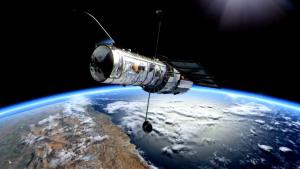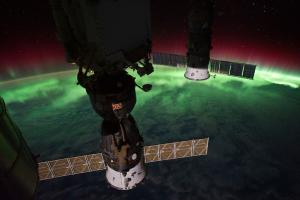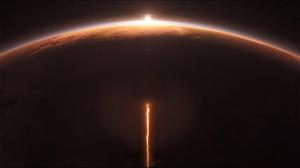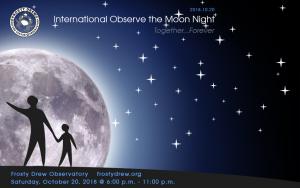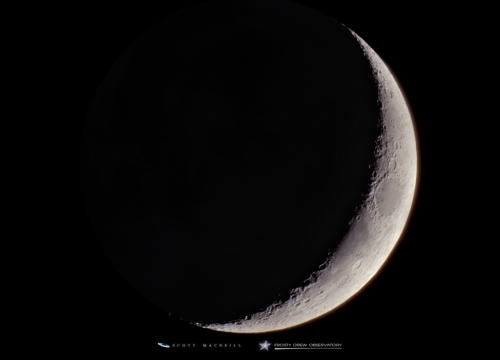
Stargazing Nights
- Where:
- Frosty Drew Observatory
- When:
- Friday October 12, 2018 at 6:30 p.m
- Cost:
- $5 Suggested Donation per person 5 years and older
Tonight is Stargazing Night and after another mostly cloudy week, the clouds will break this afternoon, leaving fabulously dark skies for us to celebrate under tonight. We’ll have a super thin 16% waxing crescent Moon with us at sunset, departing the sky at 8:37 p.m. The thin crescent will not overpower the dark sky and will offer a beautiful view of earth-shine, which is the nighttime side of the Moon illuminated by sunlight reflecting off Earth. We could have breezy conditions, though probably nothing that will affect our geek out. Last Friday was fabulous and tonight looks to be a repeat.
We will open the Observatory and Sky Theatre at 6:30 p.m. In the Observatory, the big telescope will start off with views of Saturn’s rings. Mars is on the list as well as nebulae and star clusters. Courtyard telescopes will rock the super thin crescent Moon alongside fantastic star hops along the Milky Way galactic plane. Later in the night, our courtyard telescopes will be showcasing the Andromeda Galaxy. In the Sky Theatre, we will feature our regular showcase of celestial objects photographed at Frosty Drew Observatory. The plan is to pack up at 11:30 p.m., though we have some catch up work to do and could stay much later. Check in on our Twitter (@FrostyDrewOBSY) or the right column of our website for updates from the Observatory, including a “Closing up” post when we decide to begin our end-of-night operations.
Overall, tonight looks fantastic! Clear skies and cool temps will make for excellent viewing conditions. Add in that we have a beautiful crescent Moon with us earlier in the evening, setting around 8:30 p.m., and dark skies will be copious. We have the potential for a bit of wind, though it shouldn’t be a problem. This is our second fabulous Friday night in a row, certainly a night not to miss. So put a little awesome into your seasonal weekend plans and stop in for a night with the cosmos at Frosty Drew Observatory, tonight.
---------------------
Weekly Happenings
Scott MacNeill
This past Friday, October 5, 2018, the Hubble Space Telescope (HST) experienced a failure of one of the gyroscopes that enable the telescopes pointing stability. As a result, HST has dropped into safe mode. At this time there are six gyroscopes on board HST, though two have previously failed. Friday’s failure brings that count to three failed gyroscopes. For HST to function optimally, three gyroscopes are required. Ground control operations have expected the third gyroscope to fail as it has been exhibiting symptoms of failure over the past year. After the failure, ground control attempted to enable the last remaining redundant gyroscope. Though upon activation of the device, it became clear that the redundant gyroscope was not functioning adequately for stable operation. This has left HST in a state of suspended science operations. Though three gyroscopes are required for optimal operations, HST can easily work with one gyroscope, resulting in minimal impact on science operations. A team is being formed to review and attempt a recovery of the inadequately functioning gyroscope. The goal is to maintain a three-gyroscope-based pointing stability. If this is not possible, HST will drop to a pointing stability mode utilizing only one gyroscope. Fingers crossed for best case scenario!
On the topic of space telescopes, NASA’s Chandra X-ray Observatory also transitioned into safe mode on Wednesday morning, October 10, 2018. The cause for this change in operations is still to be determined. Certainly not a good week for aging, yet awesome, space telescopes.
The last evening passes of the International Space Station (ISS) over the USA for a period of almost 6 weeks are happening this weekend. Tonight, catch the ISS passing over at 7:26 p.m. starting in WNW, rising to 24° heading S. Then again on Saturday evening at 6:34 p.m. starting in WNW, rising to 47° heading SE. The next bout of evening passes will start up again on November 21st and continue until December 16th. Note, these passes are applicable for Southern New England, and generally acceptable for the Northeast. For pass times specific to your location, visit NASAs Spot the Station.
Over the past year, Project Mars – An International Art and Film Contest has been happening. The contest is an invitation for college students and young professionals to create their own artistic vision of what NASA’s upcoming Gateway and Mars expeditions will look like. The Lunar Orbital Platform-Gateway (Gateway) is a mission to build a lunar outpost in the 2020’s that will serve as a launching ground for missions to Mars and beyond. Rules for video submissions require an under-5-minute piece that tells an inspirational story about the 9 month journey to Mars. The competition, which ended in August 2018, brought in hundreds of submissions. The winners have been announced and the results are posted online. Check out the winning video submissions, and the winning poster submissions. Note the common theme among some of the video winners: children inspired to reach for the sky. We really are on the verge of sending the first human to another planet, and that person is quite likely walking around on Earth right now.
Save the Date:
International Observe the Moon Night at Frosty Drew Observatory
Saturday, October 20, 2018 from 6:00 p.m. - 11:00 p.m.
Frosty Drew Observatory will be joining thousands of science and educational institutions across the planet in showcasing Earth’s moon. We will have the big telescope focused on specific craters and lunar surface features, including some of the Apollo mission landing sites. In the Observatory courtyard we will have telescopes showcasing the Moon in a wider field using different magnifications. The Lunar Lounge will be setup with a live view of the Moon projected on the Northwest exterior wall of the Sky Theatre. Inside the Sky Theatre, NASA Solar System Ambassador, Frank Puglia will present about the Moon and the Apollo missions. Screens around the campus will feature videos and imagery of the Moon from Frosty Drew Observatory and other science outlets. We spend so much time bagging on the Moon over the year, usually because it’s so bright. Well this is our night to make amends with Earth’s only natural satellite. So make plans (and possibly amends) to spend a mid-autumn evening out at Frosty Drew Observatory and join in the celebration for the Moon.
-Scott

